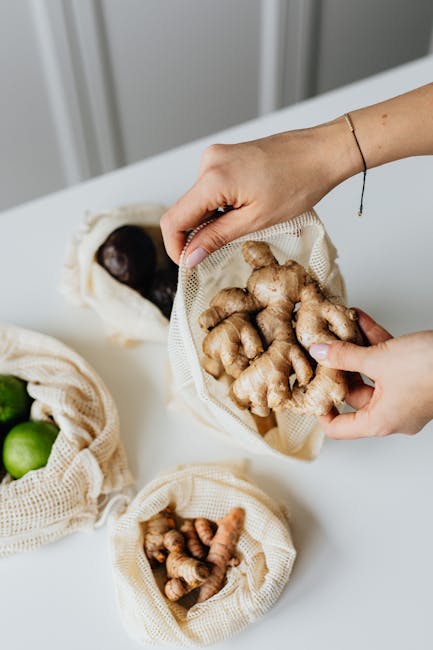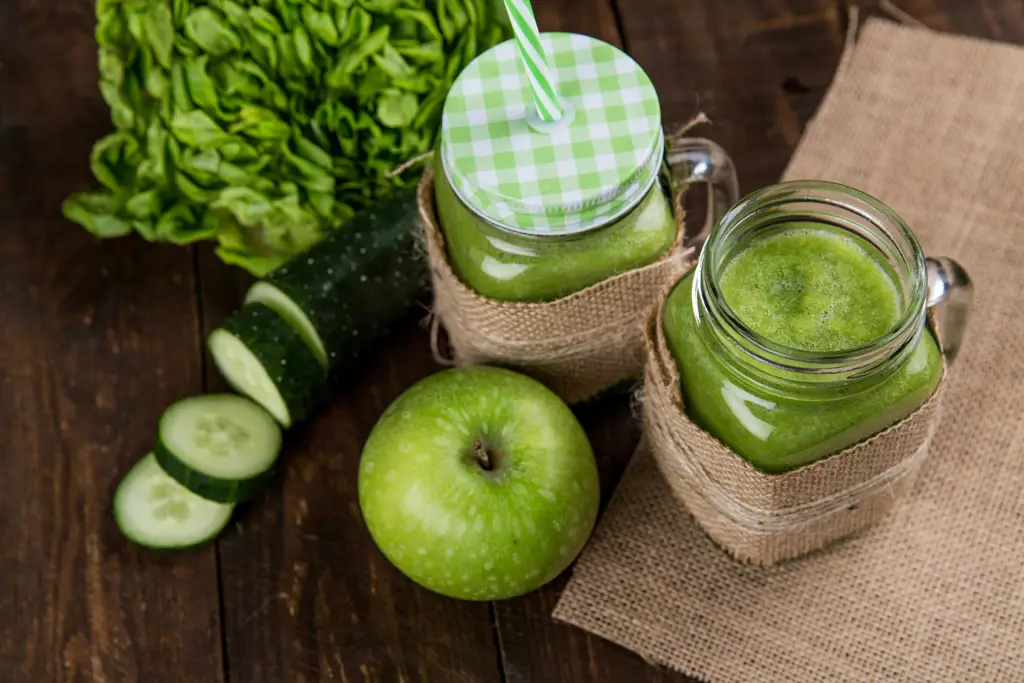Smoothie bowls, a vibrant and nutritious breakfast or snack option that’s taken the world by storm, boast a surprisingly rich history, though pinpointing their exact origin is difficult. While the concept of blended fruits and vegetables dates back centuries – think of ancient Indian lassi or Middle Eastern fruit-based drinks – the aesthetically pleasing, Instagrammable bowl presentation is a relatively recent phenomenon. The modern smoothie bowl’s rise to popularity is largely attributed to the health and wellness boom of the early 2010s, coinciding with a growing interest in superfoods and mindful eating. Initially gaining traction in health-conscious circles in Australia and California, smoothie bowls quickly spread across social media platforms, becoming a global sensation.
The cultural significance of the smoothie bowl is multifaceted. It transcends geographical boundaries, reflecting a universal desire for convenient, healthy, and visually appealing food. Its popularity highlights a shift in consumer preferences towards customizable, personalized meals, allowing individuals to tailor their bowls to their dietary needs and preferences. This adaptability is key; smoothie bowls cater to various dietary restrictions, whether vegan, gluten-free, or paleo. Furthermore, the act of creating a smoothie bowl can be a mindful and creative process, fostering a sense of connection with food and promoting a positive relationship with eating. The widespread sharing of smoothie bowl recipes and photos on social media further strengthens its cultural impact, creating a global community around this nutritious and visually stunning food.
Statistics show a significant increase in the consumption of smoothie bowls. While precise figures are challenging to obtain due to the informal nature of many smoothie bowl preparations (many are made at home), the surge in searches for smoothie bowl recipes and the proliferation of smoothie bowl-focused businesses clearly indicate a substantial rise in popularity. The market for smoothie ingredients, including frozen fruits, superfoods, and nut butters, has experienced significant growth, largely driven by the increasing demand for smoothie bowls. Interestingly, the aesthetic appeal of smoothie bowls is a major factor in their success. The vibrant colors, creative toppings, and visually engaging presentation have made them a favorite subject for food photography and social media influencers, further amplifying their popularity and cultural relevance.
Beyond the aesthetic appeal, the nutritional benefits of smoothie bowls are undeniable. They are an excellent source of vitamins, minerals, antioxidants, and fiber, making them a healthy and satisfying meal or snack. The customizable nature allows individuals to incorporate a wide range of fruits, vegetables, and superfoods, tailoring the bowl to their specific nutritional needs. This ease of personalization, coupled with their delicious taste and visual appeal, makes smoothie bowls a sustainable and enjoyable addition to a healthy lifestyle, ensuring their continued popularity for years to come.
Ingredients and Measurements
Creating the perfect healthy smoothie bowl hinges on a well-balanced combination of ingredients. This recipe provides a flexible framework; feel free to adjust quantities and substitute ingredients based on your preferences and dietary needs. We’ll focus on a base of frozen fruit for thickness and creaminess, a liquid base for blending, and a selection of healthy additions for nutrients and texture.
Frozen Fruit (1.5 cups): This forms the foundation of your smoothie bowl’s texture and sweetness. We recommend using a mix for a balanced flavor profile. Consider using 1 cup of frozen berries (such as a mix of blueberries, raspberries, and strawberries) for antioxidants and sweetness, and ½ cup of frozen mango or banana for creaminess. Avoid using solely banana, as it can lead to an overly sweet and less vibrant bowl. Experiment with other frozen fruits like peaches, pineapple, or cherries, depending on your taste.
Liquid Base (½ cup to ¾ cup): The liquid base is crucial for achieving the desired consistency. Start with ½ cup and add more gradually until you reach your preferred thickness. Avoid adding too much liquid, as this will result in a runny smoothie that’s difficult to eat as a bowl. Good options include: unsweetened almond milk (for a nutty flavor), coconut water (for electrolytes and a tropical touch), or even plain water if you prefer a less intense flavor. Consider using a liquid that complements your chosen fruits.
Healthy Fats (1-2 tablespoons): Incorporating healthy fats adds creaminess, satiety, and essential nutrients. One tablespoon of nut butter (almond, peanut, or cashew) provides protein and healthy fats. Alternatively, you can use a tablespoon of chia seeds or flax seeds, which are excellent sources of omega-3 fatty acids. Avoid using excessive amounts of fats, as this can make the bowl overly rich and heavy.
Protein Boost (Optional, 1-2 scoops): To increase the protein content and enhance satiety, consider adding a protein powder. Whey protein, plant-based protein (pea, soy, brown rice), or collagen peptides are all viable options. Choose a protein powder that aligns with your dietary preferences and goals. Remember to adjust the liquid accordingly if adding protein powder, as it can thicken the mixture.
Boosters (Optional): This is where you can get creative and add extra nutrients and flavor. Consider adding a tablespoon of spinach or kale for a hidden boost of vitamins and minerals. A teaspoon of spirulina or matcha powder can add a vibrant green color and a unique earthy flavor. For added sweetness (use sparingly!), you can add a drizzle of honey or maple syrup, but it’s best to rely on the natural sweetness of the fruit first.
Toppings (Amounts vary): The toppings are what truly elevate your smoothie bowl to the next level. Be creative! Consider adding fresh berries, sliced bananas, granola, nuts, seeds (pumpkin, sunflower), shredded coconut, cacao nibs, or even a drizzle of nut butter. The possibilities are endless! The key is to use a variety of textures and flavors to create a visually appealing and delicious bowl.
Preparation of Fruits and Vegetables (Washing, Chopping, etc.)
Creating a vibrant and nutritious smoothie bowl starts with properly preparing your fruits and vegetables. This crucial step ensures both the safety and the optimal texture of your final product. Neglecting this stage can lead to unpleasant surprises, from gritty sand in your bowl to unwanted bacteria.
Washing is paramount. Thoroughly rinse all fruits and vegetables under cold, running water. Even produce that you plan to peel should be washed first to remove any surface dirt or pesticides. Avoid using soap, as it can leave residue that’s difficult to rinse off completely and may affect the taste of your smoothie. For fruits and vegetables with crevices, like strawberries or broccoli, use a gentle vegetable brush to remove any trapped dirt. This is especially important for organic produce, which may not have been treated with protective washes.
The quantity of fruit and vegetables you’ll need depends on your desired smoothie bowl size and consistency. A typical serving might use approximately 1.5 – 2 cups of combined fruits and vegetables. For example, you could use 1 cup of frozen berries (mixed or a single type like blueberries or raspberries), ½ cup of chopped banana, and ½ cup of spinach or kale. Adjust these quantities based on your personal preferences and the recipe you are following.
Chopping techniques are key to achieving a smooth texture. For softer fruits like bananas and mangoes, you can simply chop them into roughly 1-inch pieces. This size is ideal for blending without causing excessive strain on your blender. However, for firmer fruits and vegetables like apples or carrots, smaller pieces are recommended for easier blending and to prevent large chunks in your final bowl. Aim for ½-inch to ¾-inch pieces for these ingredients. Frozen fruits are generally easier to blend, but avoid using them if your recipe calls for a finely chopped element.
When chopping, consider the type of smoothie bowl you’re making. If you want a chunky bowl with visible pieces of fruit, chop larger. If you prefer a smoother, creamier texture, chop smaller. Always use a sharp knife to ensure clean cuts and prevent bruising. A dull knife can crush the ingredients, releasing more juice and potentially altering the texture and taste of your smoothie. Remember to cut away any bruised or damaged parts of the produce. These areas can harbor bacteria and may significantly affect the flavor of your final product.
Pre-portioning your ingredients can save time and make the smoothie-making process smoother. If you regularly make smoothie bowls, consider portioning out your fruits and vegetables into freezer bags or containers for quick and easy access. This is particularly helpful for frozen fruits, which are a staple in many smoothie bowls. Properly storing your prepped ingredients will ensure their freshness and quality. Remember to label and date your containers for optimum organization.
Safety first! Always wash your hands thoroughly before handling any fruits or vegetables. Clean your cutting board and knife after each use to prevent cross-contamination. Proper preparation practices not only ensure a delicious and visually appealing smoothie bowl but also minimize the risk of foodborne illnesses.
Liquid Base Selection (Water, Milk, Yogurt Considerations)
The liquid base you choose significantly impacts your smoothie bowl’s texture, nutritional profile, and overall flavor. While water is the simplest option, milk and yogurt offer creaminess and added nutrients. Choosing the right liquid is crucial for achieving the desired consistency – thick enough to hold toppings but not so thick it’s difficult to blend.
Water: The most basic choice, water adds no calories or flavor, allowing the fruits and other ingredients to shine. It’s ideal if you’re watching your calorie intake or prefer a lighter smoothie bowl. Using approximately 1/2 cup to 3/4 cup of water is a good starting point for a single serving smoothie bowl. You might need to adjust this depending on the type and quantity of frozen fruit; frozen fruit already contains some water, so less liquid might be needed. Remember to start with a smaller amount and gradually add more until you reach your desired consistency.
Milk: Milk, whether dairy or non-dairy, adds richness and creaminess to your smoothie bowl. Dairy milk (cow’s milk) provides calcium and protein. Popular non-dairy alternatives include almond milk, soy milk, oat milk, and coconut milk, each offering unique flavor profiles and nutritional benefits. For example, almond milk is lower in calories than cow’s milk, while oat milk tends to be thicker and creamier. Using 1/2 cup to 1 cup of milk is typically sufficient, depending on the desired thickness. Consider the fat content of your chosen milk as it will impact the overall calorie count and creaminess. Full-fat milk will result in a richer, thicker bowl.
Yogurt: Incorporating yogurt adds a tangy flavor, boosts the protein content, and contributes to a thicker, creamier texture. Plain Greek yogurt is a particularly excellent choice due to its high protein content. However, any type of yogurt – dairy or non-dairy – can be used. Using 1/2 cup to 3/4 cup of yogurt is generally enough, but again, adjust according to the other ingredients and your preferred consistency. Be mindful of added sugars in flavored yogurts; opting for plain yogurt allows for greater control over the sweetness level of your smoothie bowl.
Combining Liquids: You can also experiment by combining different liquids to achieve the perfect texture and flavor profile. For instance, you could mix water with a small amount of milk or yogurt to create a slightly thicker bowl without adding too many extra calories or a strong flavor. This allows for greater flexibility in tailoring your smoothie bowl to your specific preferences. Experimentation is key to finding your perfect liquid base combination. Start with a base of one liquid and then add others incrementally until you achieve the optimal consistency.
Professional Recommendation: Always start with the lower end of the recommended liquid quantities and gradually add more as needed. This prevents your smoothie bowl from becoming too thin. The consistency should be thick enough to hold toppings without immediately sliding off. Finally, pay attention to the type of frozen fruit you are using; some fruits are naturally icier than others, affecting the amount of liquid required.
Blending Instructions (Speed, Time, & Consistency)
Creating the perfect smoothie bowl texture requires a strategic approach to blending. The key is to achieve a thick, yet still pourable consistency that’s easy to spoon and won’t be overly watery or overly dense. This section details the optimal blending process to ensure a delicious and aesthetically pleasing result.
Start with your frozen ingredients. This is crucial for achieving the desired thickness. If you’re using fresh fruits, add a few ice cubes (approximately 4-6, depending on the amount of liquid) to compensate for the lack of frozen solidness. Frozen fruit will provide the base for a thicker, colder smoothie bowl.
Begin blending on a low speed (speed 1 or 2) for the first 15-20 seconds. This allows the blender to gently incorporate all ingredients and prevents large chunks of frozen fruit from getting stuck. Adding liquids too early can result in a thin and less appealing smoothie.
Gradually increase the speed to medium (speed 4-5) after the initial 15-20 seconds. At this stage, the frozen fruit should be starting to break down and blend together. Continue blending on medium speed for approximately 30-45 seconds, scraping down the sides of the blender as needed with a spatula or tamper. This ensures even blending and prevents ingredients from accumulating at the bottom.
Add your liquid slowly. Begin with a smaller amount (approximately ¼ cup to ½ cup) of your chosen liquid, whether it’s milk (dairy or non-dairy), juice, or water. Start with the smaller quantity and incrementally add more until you reach your desired consistency. Do not add all the liquid at once! This is the most common mistake; it leads to a thin and watery smoothie bowl.
Increase the speed to high (speed 8-10) for the final 15-20 seconds. This high-speed burst will help to create a smoother, creamier texture. However, be careful not to over-blend, as this can lead to a warm and less appealing smoothie bowl. Over-blending can also cause the smoothie to become overly thin as the ice melts completely.
Check the consistency. Once the blending is complete, stop the blender and assess the consistency. It should be thick and creamy, resembling soft-serve ice cream. If it’s too thick, add a tablespoon or two of liquid at a time and blend briefly until you achieve the desired consistency. If it’s too thin, add a few more frozen fruits and blend again until it thickens.
Professional recommendation: For optimal results, use a high-powered blender. High-powered blenders are more efficient at breaking down frozen fruits and creating a smoother texture. If using a less powerful blender, you may need to blend in shorter bursts with pauses to prevent overheating the motor.
Important Note: The exact blending time and speed may vary depending on your blender’s power, the type and quantity of ingredients used, and your preferred consistency. Always start with the lowest speed and gradually increase as needed. Practice makes perfect – don’t be afraid to experiment until you find the perfect blend for your smoothie bowl!
Topping Suggestions (Healthy Options, Portion Control)
Transforming your smoothie bowl from a simple breakfast to a vibrant, nutrient-packed masterpiece hinges on the right toppings. Choosing healthy options and practicing portion control are key to maintaining the nutritional balance of your creation. Remember, the goal is to complement, not overwhelm, your smoothie base.
Fruits: Fresh fruits are a fantastic way to add natural sweetness, vitamins, and fiber. Consider berries (strawberries, blueberries, raspberries) – approximately ¼ cup per bowl – for their antioxidant power and sweetness. A thin slice of banana (about ⅓ of a medium banana) provides potassium and creaminess. Mango chunks (1-2 tablespoons) offer a tropical twist. Avoid overly sugary fruits like grapes or canned fruit in heavy syrup.
Nuts and Seeds: A small sprinkle of nuts and seeds provides healthy fats, protein, and crunch. Use approximately 1-2 tablespoons total. Choose from options like chopped almonds (1 tablespoon), chia seeds (1 teaspoon), pumpkin seeds (1 tablespoon), or slivered pecans (1 tablespoon). Be mindful of portion sizes as nuts and seeds are calorie-dense. Consider pre-measuring them into small containers for easy portion control.
Spices: A dash of cinnamon (⅛ teaspoon), nutmeg (a pinch), or ginger (⅛ teaspoon) can add warmth and complexity to your smoothie bowl. These spices also boast anti-inflammatory properties and can enhance the overall flavor profile. Experiment with different spice combinations to find your favorites.
Healthy Fats: A small amount of healthy fats adds satiety and creaminess. A teaspoon of nut butter (almond, peanut, cashew) or a drizzle of coconut oil (½ teaspoon) can elevate your bowl. Avoid excessive amounts of added fats, as they are high in calories.
Cacao Nibs: For a chocolatey kick, add a tablespoon of cacao nibs. They offer a richer, less sweet alternative to chocolate chips and provide antioxidants. Be aware that cacao nibs can be quite bitter, so start with a small amount.
Shredded Coconut: Unsweetened shredded coconut (1-2 tablespoons) adds a tropical touch and a pleasant texture. Opt for unsweetened varieties to avoid added sugars.
Portion Control Strategies: To avoid overdoing it on toppings, consider using small bowls and measuring your toppings before adding them. Visual cues can also be helpful; aim for a balanced arrangement of toppings, rather than piling them high. Start with a small amount of each topping and add more only if needed. This way, you can enjoy the variety of flavors and textures without sacrificing the nutritional balance of your smoothie bowl.
Important Note: Always check for any allergies before adding toppings. If you have any dietary restrictions or health concerns, consult with a registered dietitian or healthcare professional before making significant changes to your diet.
Serving and Enjoying Your Healthy Smoothie Bowl
Once your vibrant and nutritious smoothie bowl is blended to perfection, it’s time for the fun part: serving and enjoying your creation! The presentation of your smoothie bowl is just as important as its taste and nutritional value. A beautifully arranged bowl is more appealing and encourages mindful eating.
Start with the base: Carefully pour your smoothie mixture into a bowl. A wide, shallow bowl works best, allowing for ample space to arrange your toppings. Aim for about 1 to 1.5 cups of smoothie base per serving, depending on the size of your bowl and your appetite. Avoid overfilling, as this can make it difficult to add toppings and enjoy the texture.
Adding the toppings: This is where you get creative! The beauty of a smoothie bowl lies in its customization. Consider a variety of textures and flavors to complement your smoothie base. A good rule of thumb is to use about 1/4 cup to 1/2 cup of toppings in total. This can include a mix of fresh fruits (berries, sliced bananas, kiwi), nuts (almonds, walnuts, pecans – about 1-2 tablespoons), seeds (chia, flax, hemp – about 1 tablespoon), shredded coconut (1-2 tablespoons), granola (2-3 tablespoons), and even a drizzle of nut butter (1-2 tablespoons).
Texture is key: Think about creating a balance of textures. Combine crunchy elements like granola and nuts with softer options like berries and banana slices. This will provide a more interesting and enjoyable eating experience. Don’t be afraid to experiment! Explore different combinations of toppings to discover your favorite flavor profiles.
Presentation matters: Arrange your toppings artfully. Consider creating a visually appealing pattern or design. You can use a spoon to create swirls or strategically place your toppings to create a visually stunning bowl. This thoughtful presentation enhances the overall appeal and enjoyment. Think about color contrast – vibrant colors can make your bowl even more enticing.
Serving temperature: Smoothie bowls are typically best enjoyed immediately after preparation. This ensures the freshest flavor and optimal texture. However, if you need to prepare it ahead of time, store the smoothie base separately from the toppings in an airtight container in the refrigerator. Add the toppings just before serving. Avoid letting the bowl sit for too long, as some toppings may soften or become soggy.
Mindful eating: Once your smoothie bowl masterpiece is ready, take a moment to appreciate its beauty and aroma. Enjoy the process of eating mindfully. Savor each bite, paying attention to the different textures and flavors. This mindful approach enhances the overall experience and allows you to fully appreciate the health benefits of your creation. Enjoy!
Pro Tip: If you’re short on time, pre-portion your toppings into small containers for easy and quick assembly. This makes creating a beautiful and nutritious smoothie bowl a breeze, even on busy weekdays.
Recommendations for Your Healthy Smoothie Bowl
This section provides comprehensive recommendations to enhance your smoothie bowl experience, covering serving suggestions, storage, complementary dishes, and nutritional information. Remember that the nutritional content will vary significantly depending on the specific ingredients you choose. The values provided below are estimates for a typical fruit-based smoothie bowl.
Serving Suggestions: For optimal enjoyment, serve your smoothie bowl immediately after preparation. The texture is best when fresh. Consider layering your toppings for visual appeal and varied textures. Start with a base of your smoothie, then add your favorite toppings strategically. A common approach is to arrange larger toppings, like sliced fruit or granola, around the edge, and then sprinkle smaller toppings, such as seeds or nuts, in the center. Drizzling honey, maple syrup, or nut butter adds extra flavor and richness. Get creative! Experiment with different combinations of fruits, vegetables, and toppings to find your perfect blend.
Storage: Leftover smoothie bowls are best consumed within 24 hours of preparation. Store them in an airtight container in the refrigerator. However, keep in mind that the texture may change slightly after refrigeration, potentially becoming less creamy. Do not refreeze a smoothie bowl as this will significantly alter its texture and quality.
Complementary Dishes: Smoothie bowls can be a delightful part of a larger meal or snack. They pair well with light and refreshing dishes. Some excellent complementary options include a side of whole-wheat toast with avocado, a small serving of Greek yogurt, or a handful of berries. For a more substantial meal, consider serving your smoothie bowl alongside a small portion of scrambled eggs or a whole-grain muffin. Avoid pairing it with heavy, rich foods that might overpower the lightness of the smoothie bowl.
Calorie and Nutritional Information (Approximate Values): A typical smoothie bowl made with approximately 1 cup of frozen fruit (berries, banana), ½ cup liquid (milk or yogurt), and 2 tablespoons of nut butter will contain approximately 350-450 calories. The nutritional profile will vary widely depending on the ingredients. However, a well-made smoothie bowl is a good source of vitamins, minerals, fiber, and antioxidants. It can provide a significant amount of vitamin C, potassium, and dietary fiber, contributing to overall health and well-being. Always check the nutritional information of the individual ingredients you use to calculate a more precise nutritional breakdown for your specific recipe.
Important Note: These recommendations are guidelines. Adapt them to your own preferences and dietary needs. If you have any specific dietary restrictions or allergies, ensure all ingredients are suitable for you. Consult a healthcare professional or registered dietitian for personalized dietary advice.





